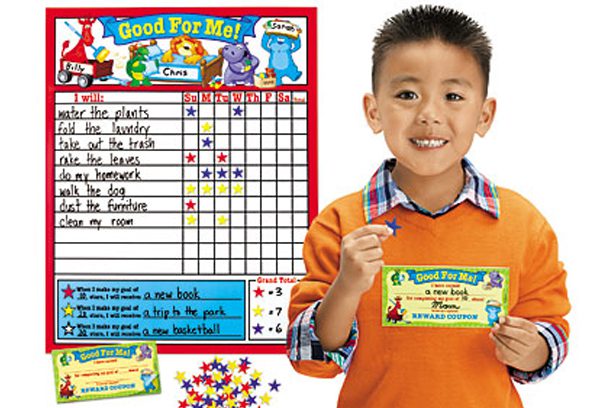
by admin | Jul 25, 2013 | Blog

I wrote the column below three years ago. While time has passed, my thoughts are the same today.
My daughter Casey has loved books since she was a baby. We began to read to her lying on our backs holding the book above our heads when she was just three months old. She would sit forever if we kept reading. We even fought with our first babysitter who thought it was a strange idea to bring a baby to the library. Casey is now six years old, and she still loves to read.
Last year in Kindergarten she figured out that she could actually read herself. It was so exciting. My excitement came to a halt when she would still choose to thumb through a book just looking at the pictures. I got put further in my place when a mother of another child in the class told me her child was reading Harry Potter. . . in Kindergarten. Now, Casey is no slouch in school. In fact, she prefers it to summer camp. But apparently she was falling behind the “A” kids. I just couldn’t believe that a 5 year old was reading and comprehending Harry Potter. One day I took Casey and her genius, Harry Potter-reading, little friend to the library. I sat down with both girls and we all took turns reading Curious George. Turns out this Harry Potter-reading child reads no better than Casey. I was relieved then perplexed. Why would parents brag about their child reading a book that is clearly meant for an older audience? Furthermore, why would a mom brag when her child couldn’t possibly be reading books at that level? Lastly, why would I care if she was reading Harry Potter but Casey wasn’t?
This last question is the one that still plagues me. Now in first grade, Casey is a confident reader. She still absolutely loves books and magazines. Yet, she isn’t interested in the beginning chapter books like many of her friends. She mostly wants to read picture books of any kind. She will happily read about whales, space, olden times, Martin Luther King Jr. and Helen Keller as long as there are colorful pictures, but nothing that has real looking chapters. Casey’s reading choices bring up an ugly inner struggle that I have tried to but just can’t shake.
Why do I care what other children are doing? Why does my child have to be one of the smartest? Prettiest? Best at ballet and swimming? Do I really want all of that? I don’t think so. What I really want is for her to be kind, loving, a good friend, and to have a happy life. Yet, I feel this tug every time my child isn’t measuring up. There is an unspoken competition that goes a good distance past being able to brag about your child’s college or chosen career.
When I grew up I took piano lessons once a week and then went to Hebrew School once a week. That was it until I started middle school sports. There was no little league for girls or soccer or gymnastics or ballet. Maybe some kids did other activities, but it wasn’t the constant “lessons” we are currently living through. After school I rode my bicycle outside and played football in the yard with neighbors. I made my own snack and watched some General Hospital until dinner. On any given day I could find 10 people on my street to play with. Now it is virtually impossible to match schedules with one of Casey’s friends for a play date. Every kid has somewhere between 3 and 5 after school activities not including weekend activities.
Last summer when my son was almost three years old, I was asked by a few parents if I was going to sign him up for soccer. Another parent wanted to know if Emmett wanted to take Tai Kwon Do with her son. Some other parents were signing up their kids for swim lessons. While there is nothing wrong with any of these activities, why does a three year old need lessons in anything?
As a family coach I am often counseling parents to schedule less for their children. I believe over-scheduling reduces a child’s ability to self entertain, reduces the amount of quality family time, and can create a stressful life trying to make all of the activities and schedules work out. I firmly believe less is more. Yet, I still struggle to keep my kids activities to a minimum. Since all of the other kids are taking soccer and swimming are my kids doomed always to be the worst at sports because I have a philosophy? Will kids who have been skiing or skating or playing the violin always be better than my kids? Will this affect their self esteem in some negative way?
I don’t have the answers to any of these questions and I guess time will tell. But, my discomfort in the current state of affairs in early childhood activities is only the tip of the iceberg. The problem really is how I cannot stop comparing my child’s progress to the other children around them. It used to be we wanted to keep up with the Jones’s. Now we have to keep up with their kids too.
As a kid I hated to read. I literally made it until 10th grade before I read a book. Now I am a voracious reader. I have come to realize that Casey has the rest of her life to read books without pictures. What’s the rush? I hope I can keep my own pressures out of my children’s lives so that I can make the best choices for them without worrying about what the Jones’s kids are doing. Wish me luck.

by admin | Jul 22, 2013 | Blog, Catherine's Picks

Rewarding kids for good behavior is a way to minimize negative behaviors and encourage more positive ones. I like this chart because you can write in the behaviors and what a child earns for the stars earned.
It is good to start with only a few behaviors for younger kids. For older children, you can write 6-8 behaviors. Also, try one behavior you know your child can do, one that is a little of a reach but he/she can do, and one that he/she hasn’t done yet, but you would like to see. In the beginning it is good for the child to get a few stars easily. It helps get them invested in the system. Lastly, behaviors on the chart must be positive. Avoid giving a star for not hitting brother, for not spitting food out, for not making a mess. Instead reward for catching child being nice to brother, eating food with good manners, and for cleaning up.
Some good examples of behavior for the chart would be: Put clothes in laundry basket, hang up book bag, good table manners, listens the first time asked, does a good job on homework, and helps a parent with a chore. Choose items that you feel you are always nagging your child to do.

by admin | Jul 5, 2013 | Blog, Uncategorized

So your previously delicious angel has turned into a screaming, biting, head banging, little trouble maker. Here is the good and the bad news. As children become more secure with their attachment to their parents they begin exploring their environment wanting independence. The good news is that as your child pushes him/herself to do more difficult tasks he/she will develop a strong self-esteem as well as learn to dress oneself, put on shoes, brush teeth, spread the butter on toast, etc. The bad news is that it can be frustrating to be a little guy/girl who wants badly to be able to make choices and do for himself but can’t always do so.
Toddlerhood, while difficult for children, can be brutal for the accompanying adult. However, there are ways to not only get through this time, but to grow as parents and children. Here are some tips that you can begin as soon as the first tantrum rears its ugly head:
- Manage your schedule so that you leave extra time for everything. Rushing just doesn’t work for toddlers.
- Plan less and accomplish more. The more you put on your plate and the plate of your toddler, the more opportunities there are for your plans to be thwarted by tantrums.
- Before you say no to your toddler who asks to do something for himself, think first if you can let him try. It is better to let your toddler try to put his shoes on and fail then it is to tell him he can’t do it. If you aren’t hovering and waiting to jump in there he will probably eventually ask you for help.
- This might sound like a cliché, but choices are very powerful. Whenever you can give your child a choice it is best because it makes him feel like he has some control over his environment.
- No matter how carefully you tread, you cannot avoid all tantrums. Sometimes little people are irrational. The best way to deal with an irrational, screaming child is to ignore him. No matter what, don’t give in. Sometimes the tantrum has to run its course with the child not getting his way to realize that a tantrum is not an appropriate way to get what he wants. If you give in to just end the screaming (which I know is insanely tempting), it only reinforces to the child that this act works.
- Remember that this is a phase. Your child isn’t trying to harass you or make your life more difficult. He is just trying to grow up.

by admin | Jun 20, 2013 | Blog
When I was growing up, meals were not a time for personal choice. If the parents were eating something we didn’t like, we didn’t get an option of peanut butter and jelly or pasta with butter. We couldn’t ask for a bowl of cereal or yogurt instead. We were stuck eating pot roast in a red sauce with lima beans. Not only that, we had to eat everything off of our plates AND drink eight ounces of milk with every meal. For me, this meant many nights of staring down heaping portions of gross food and a full glass of milk. I tried all of the tricks (chicken in the napkin, feeding the leg of lamb to the dog, and excusing myself mid meal to spit out corned beef hash in the toilet). I never got used to suffering through food and I never got used to the milk either.
Sometimes I think about how those experiences around the dinner table have shaped my eating habits as a grown-up and a parent. My parents were not trying to torture my sister and me. They wanted to make sure we ate well balanced meals with meats, vegetables, and dairy. I get why that is important. But, at what price? Learning to eat, past the point of being full, was a consequence of the “clean plate club” philosophy. My entire family suffers from this problem. Furthermore, as a grown-up, I wouldn’t touch milk if it was the only drink on a deserted island during a heat wave.
What really interests me now, beyond how the family table affected my eating, is how my eating habits growing up affect how I deal with my own children at dinnertime. When parents have their first child, there are many conversations about how they will raise their child. Sometimes they think their parents did a good job and they emulate how they were raised. Other times, it is just the opposite. In my case with feeding my child, I just couldn’t force her to eat anything. Couldn’t do to her what I absolutely hated as a child. But, I didn’t want to become one of those moms who offered 15 choices for dinner either. So, I thought the best thing to do was to expose my daughter, Casey, to a wide variety of foods and cultures. Surely pure exposure and our love for food, will encourage good eating habits.
Uh, not so fast. Casey always had preferences. She never liked smooth with chunky. She gagged often and didn’t chew hard foods very well. All of that said, she managed to eat well enough until she approached three years old. All of the sudden, she stopped eating spaghetti sauce and meats and anything that had color. By age four, she pretty much was only eating bagels, cheese, and pasta (an all white diet). “How did this happen” I often wondered. Then it struck me like a ton of bricks.
Casey knew that I wasn’t going to MAKE her eat anything. So little by little, she stopped eating anything she found undesirable. Well this isn’t what I wanted to happen when I thought about not using the clean plate club approach. It became such a hassle to make sure where ever we went, there was something for Casey to eat. My husband and I were extremely frustrated, but what could we do. I knew the alternative, and I still wasn’t prepared to force feed.
After extensive research and using my family coach sensibilities, my husband and I crafted a plan to change Casey’s eating habits. Right away, I realized that what she chose to eat was very tied to how hard I pushed, but in an opposite way. The more I begged her to just eat the pizza at a birthday party, the harder she dug her heals in. Even if she might have wanted the pizza, she knew she could win this battle so she didn’t eat it. As soon as we backed off and acted as if we didn’t care if she ate or not, she suddenly decided for herself what she wanted to eat. This was not an easy task. I literally would bite on my tongue at meals to avoid telling her to eat. If she didn’t eat well I didn’t offer food after the meal. She had to wait until the next meal was served.
At every meal I offered her one food that I knew she would eat plus two items that she wasn’t thrilled about. I told her she didn’t have to eat any of it, but if she did, she would get a star. If she got three stars, she could have an M&M or a small cookie. In the beginning, she wasn’t going to just eat chicken or a hotdog. If took months of getting a star just for having it on the plate, then stars for taking a lick, and finally a star for a bite. In the end, she would get one star for tasting a food and three if she liked it and finished it.
After more than 5 years of presenting foods without the pressure to eat, rewarding her for trying something she might not have considered without the reward, and relaxing about every single meal, Casey is now an average eater. She still loves pasta and cheese, but now she eats eggs (even sunny side up), any kind of chicken, hotdogs, burgers, carrots, watermelon, rice and beans, fish, and even Chinese dumplings. I nearly cried once at a sushi restaurant when she asked to try shrimp sushi (which she now loves).
It turns out that there is a way to encourage good eating habits without forcing food on my child or turning myself into a short order cook. Working with my daughter’s tastes instead of trying to change her into a different kind of eater and backing off significantly was the best way to honor her choices and my need for her to have a balanced diet.
Here are some other tips that will help with mealtime battles:
Use similar foods to expand a diet. Begin trying to expand a child’s repertoire by offering favorite foods in slightly different forms. If your child only likes spaghetti try mixing spaghetti with linguini. Then try just linguini. Once you child accepts two kinds of pastas you can try other shapes, rice, or any grain. If your child likes French fries and ketchup try sweet potato fries, baked potato, home fries, potato encrusted chicken, cheese fries, etc. Use the favorite food as a base and expand from there. If your child likes condiments allow that condiment to go one others food as a way of bridging the gap. Offer ketchup with eggs, potatoes, chips, chicken, cheese, etc.
Eat with your children. It can be difficult to eat together when children eat early or with hectic schedules or spouses working late, but it is incredibly important. It may not always be possible, but it is best to schedule it in for at least five times per week (breakfast, lunch or dinner).
Model positive habits. As long as you are eating with your children you might as well show them how eating vegetables is done. Talk positively about food. Research shows that children’s intake of vegetables and milk improves when adults around them consume the same.
Create a healthy balance. Restricting some types of food can cause over consumption and preference. Over encouragement to eat fruits and vegetables produces under consumption. Find a way to quietly and calmly encourage new foods without putting excessive pressure to succeed.
Relax. The more pressure you put on perfect nutrition or controlling your child’s diet, the more likely you will have a battle of wills with your child about eating. Once a battle of wills begins you will lose even if you win. No one enjoys the constant arguments and disappointment at the dinner table. So even if you are going crazy inside, give the impression that you are flexible and not overly invested in what you child eats.
Rotate favorite foods. In order to avoid a food jag (a food or group of foods that are the only things a child will eat) don’t give the same food every meal. Even if you are rotating in some less desirable foods it will still be better than repeating.
Be creative. Use cookie cutters, fun utensils, condiments, and smiley faces to encourage trying new foods. My daughter isn’t much interested in French toast, but if I put a little whipped cream on it for two eyes and use coconut as the smile, she will eat it. A sandwich is so much more appealing if it is in the shape of the child’s initial or a butterfly.
Play with food. The more food can be fun and not pressurized, the more successful your attempts will be to encourage better habits. Think of food preparation as a teaching moment. Kids who are exposed to foods in a variety of ways are more likely to eat it. Use play food in a play kitchen to pretend to prepare healthy meals and feed it to dolls. Let your child “help” prepare meals even if he/she is only holding the mixing spoon. You can even do a scavenger hunt asking your child to help you find foods. Let your child touch and grab the food without the pressure of tasting it. Seeing, smelling and touching different foods will make a child more comfortable around food.
Be Respectful and Repetitive. You child is entitled to likes and dislikes. Try to honor those as much as possible. At the same time offer a rejected food every few days without pressure to eat it. It can take weeks of exposure before a child decides to taste something. Allow your child to touch, squish, lick, and chew a new food. The adage “if at first you don’t succeed, try again” should be your motto.
Be Patient. Making a change in eating habits is much more complicated than just offering and encouraging new foods. It can take weeks to months of effort to see any difference in your child’s eating. If you plan for the long haul and proceed very slowly you are more likely to have lasting success.





